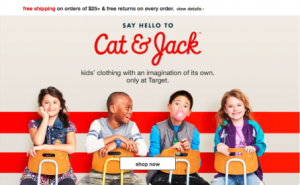The technology company has said that it will begin to punish sites that display interstitials or pop-ups that obscure indexed content. The change isn’t due to come into play until January 2017, but we wanted to take the opportunity to explore the extent of the new rules and their possible impact.
We know from Google’s past algorithm updates that the focus has turned to the ever-increasing number of mobile users. One change Google said it was “experimenting” with in relation to the ranking signal was mobile-friendly design. The company added a ‘Mobile-friendly’ label, which appeared in the search results when a site conformed to its criteria – such as using text that’s readable without zooming, sizing content to the screen or avoiding software like Flash.
It’s clear, then, that there are multiple factors in the way that Google rates websites into the mobile experience – so how much weighting will it be applying to those using pop-ups or interstitials? We won’t know until it happens, but we can speculate.
How do people browse the web on mobile?
Let’s think about people’s usage and habits when it comes to browsing the web on a mobile device.
Dissimilar from perhaps on a laptop or a desktop, those searching the web on their mobile will tend to be picking up the device to look up something specific. These searches will often be long-tail keywords which will draw up deeper links from a site, and this is where brands need to be careful. Popovers featured on these detail pages, and which distract from the main content, can be a barrier to conversion and lead to bounces.
Rather, marketers need to be selective about how they use pop-ups and take a more considered approach when it comes to the user experience.
What constitutes a bad UX?
No-one wants to create a bad user experience, because it can be detrimental to credibility, performance and conversions. However, if companies achieve good response rates to newsletter sign-up popovers, you could argue that they aren’t providing a negative web experience and, in fact, it would be wrong to penalize.
With the right tool, brands can also be cleverer about when, where and how popovers appear. If a company is trying to collect a steady stream of email addresses from new website visitors, it might make sense to host the popover somewhere on the homepage. After all, the homepage is your company’s shop window and its purpose is to lure people in.
It would also be wise to consider when it pops up. In order not to disrupt the journey and experience, you would want to prevent the popover from appearing immediately. And, of course, you would also want to prevent the pop-up from appearing on the next visit if the user had either signed up or dismissed it.
Will it or will it not?
Let’s remember that the new signal in Google’s algorithm is just one of hundreds of signals that are used to determine rankings – so popovers could make up a small percentage of the overall score. What we take from it all is: if a page’s content is relevant, gets lots of clicks and has a decent dwell time, it may still rank highly (in fact, read the official Google blog post). If a popover is enhancing the experience by giving users another way to consume similar content, and there is positive uptake, we don’t see the harm.
Digital & Social Articles on Business 2 Community(66)



